I have a large dataset over many years which has several variables, but the one I am interested in is wind speed and dateTime. I want to find the time of the max wind speed for every day in the data set. I have hourly data in Posixct format, with WS as a numeric with occasional NAs. Below is a short data set that should hopefully illustrate my point, however my dateTime wasn't working out to be hourly data, but it provides enough for a sample.
dateTime <- seq(as.POSIXct("2011-01-01 00:00:00", tz = "GMT"),
as.POSIXct("2011-01-29 23:00:00", tz = "GMT"),
by = 60*24)
WS <- sample(0:20,1798,rep=TRUE)
WD <- sample(0:390,1798,rep=TRUE)
Temp <- sample(0:40,1798,rep=TRUE)
df <- data.frame(dateTime,WS,WD,Temp)
df$WS[WS>15] <- NA
I have previously tried creating a new column with just a posix date (minus time) to allow for day isolation, however all the things I have tried have only returned a shortened data frame with date and WS (aggregate, splitting, xts). Aggregate was only one that didn't do this, however, it gave me 23:00:00 as a constant time which isn't correct.
I have looked at How to calculate daily means, medians, from weather variables data collected hourly in R?, https://stats.stackexchange.com/questions/7268/how-to-aggregate-by-minute-data-for-a-week-into-hourly-means and others but none have answered this question, or the solutions have not returned an ideal result.
I need to compare the results of this analysis with another data frame, so hence the reason I need the actual time when the max wind speed occurred for each day in the dataset. I have a feeling there is a simple solution, however, this has me frustrated.

